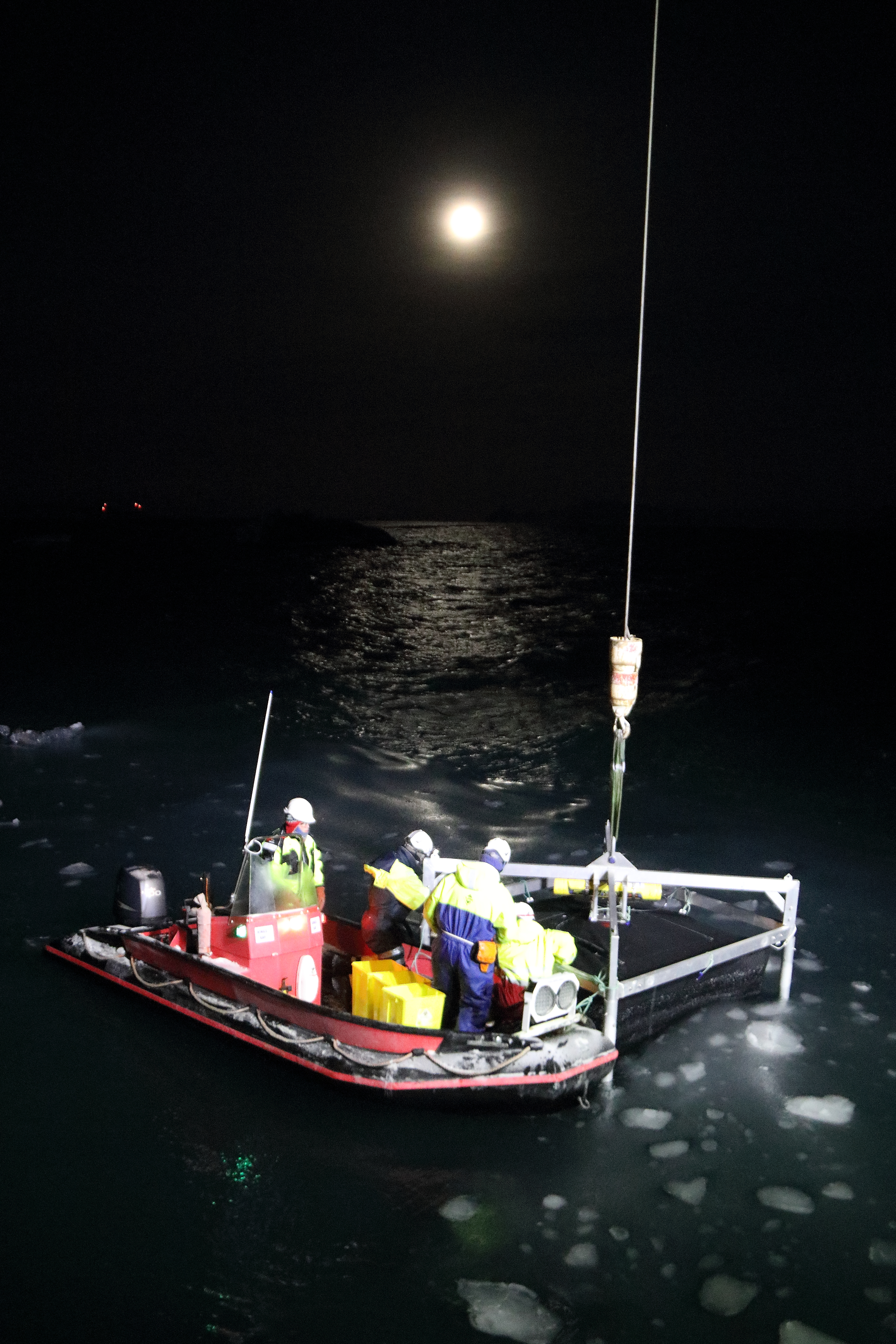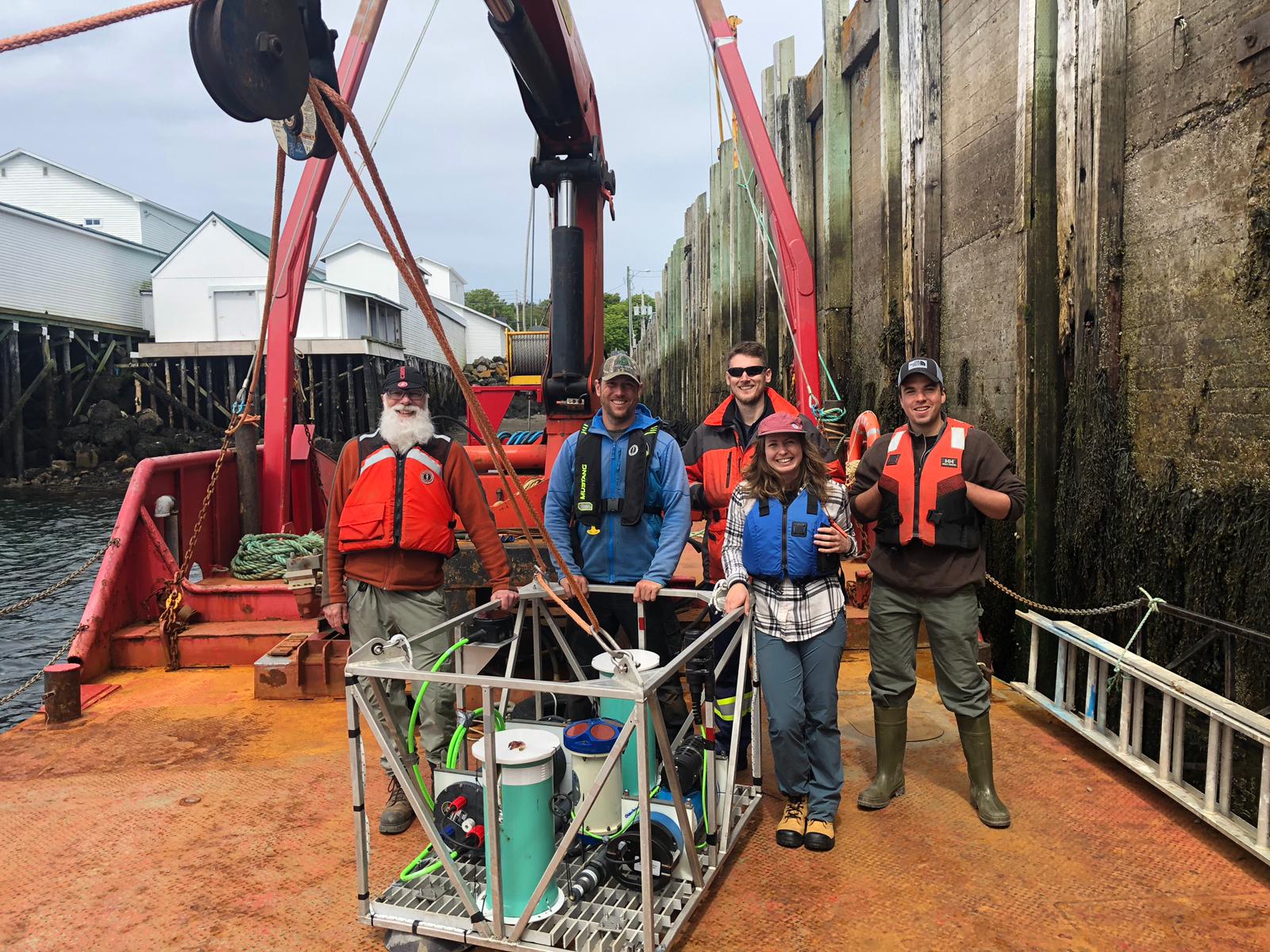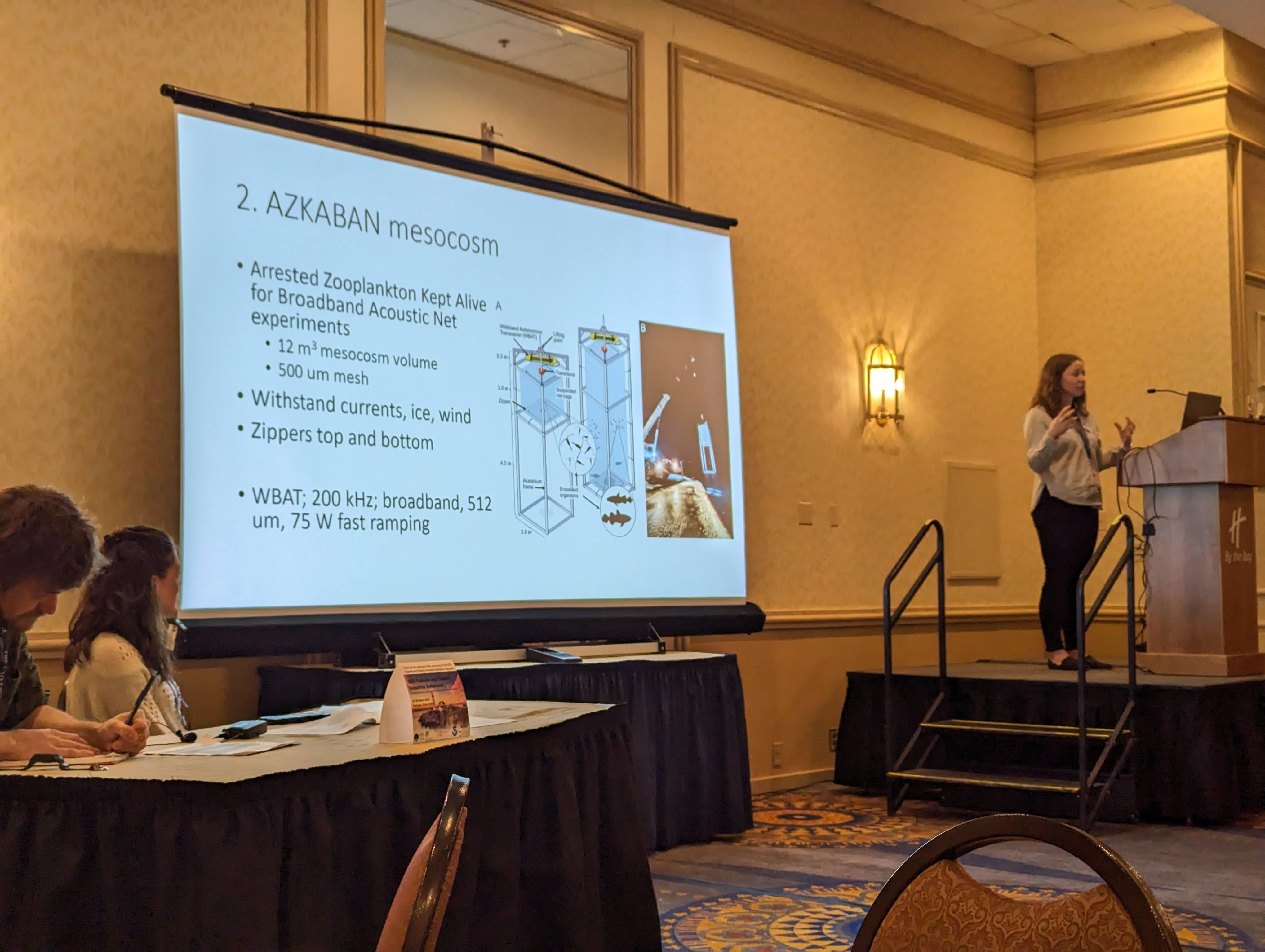Page Not Found
Page not found. Your pixels are in another canvas.
A list of all the posts and pages found on the site. For you robots out there is an XML version available for digesting as well.
Page not found. Your pixels are in another canvas.
About me
This is a page not in th emain menu
Published:
Article about SFI Harvest field remote operated field campaign for Calanus mapping
Published:
Article about Deep Impact campaign in Svalbard in January 2023 published in Nature written by journalist, Randall Hyman. I was part of a large campaign studying the effects of the polar night on various arctic ocean species. My PhD research with mesocosm (AZKABAN/AFKABAN) is summarized.
Published:
Article about publication of Sailbuoy survey in Tromsøflaket
Published:
Article about Polar Night cruise to the Polar Front and Kongsfjorden
Published:
Article about field campaign in Ny-Ålesund in Svalbard.
Published:
Ny lyttepost i nord: akustikk stipendiat på GLIDER prosjektet
During my PhD I lead a field campaign, AZKABAN-light (Arrested Zooplankton Kept Alive for Broadband Acoustic Net light experiment) during which we built a purpose-built mesocosm species for acoustic experiments in Ny-Ålesund, Svalbard during the polar night in January 2022. Fieldwork collaboration with Chelsey McGowan-Yallop and Stig Falk-Petersen. Photo taken by Malin Daase. 
The frame before being deployed for a month in the Bay of Fundy and the team who help deploy, prepare and build it. Grand Passage, September 2018. (Left to right: Len Zedel, Greg Trowse, Mark Downey, Muriel Dunn and Richard Cheel.) 
Deploying eight drifters to study tidal currents and estuarine residence times in Grappler Inlet, Bamfield, BC during Bachelor final year project (February 2015). Left to right: Muriel Dunn and Mark Halverson. 
Published in Underwater acoustics conference and exhibition, 2019
Detecting fish in ADCP measurements using coninciding incidences of high phase correlation and high intensity.
Recommended citation: Dunn, M., Zedel, L., Trowse, G. (2019). "Development of acoustic Doppler fish monitoring for applications in high-energy tidal channels". UACE2019-Conference Proceedings. https://www.uaconferences.org/docs/Past_Proceedings/UACE2019_Proceedings.pdf
Published in Memorial University of Newfoundland Library, 2019
This thesis presents results from a 600 kHz RD Instruments Workhorse ADCP alongside a 120 kHz BioSonics DTX Submersible Split-Beam Echosounder system and contrasts their capabilities in the context of fish monitoring in high-energy tidal channels.
Recommended citation: Dunn, M., 2019. Developments in fish detection using broadband acoustic doppler current profiler (Masters dissertation, Memorial University of Newfoundland). https://research.library.mun.ca/14340/1/thesis.pdf
Published in Canadian data report of fisheries and aquatic sciences, 2020
The conservation objectives of the Anguniaqvia niqiqyuam Marine Protected Area (ANMPA) focus on maintaining the integrity of marine habitats offshore of the Cape Parry Migratory Bird Sanctuary that support populations of key species, such as beluga whales, Arctic Char, and ringed and bearded seals. This report provides ecosystem-level scientific knowledge to support the development of monitoring objectives and activities.
Recommended citation: Niemi, A., Majewski, A., et al. (including Dunn, M.) (2020). Data from the BREA-MFP and CBS-MEA research programs describing the Anguniaqvia niqiqyuam Marine Protected Area (ANMPA) ecosystem. Can. Data Rep. Fish. Aquat. Sci. 1316: ix + 90 p. https://publications.gc.ca/site/eng/9.892324/publication.html
Published in Akvaplan-niva reports, 2021
We completed a quality control check of the mission data and presented an overview in the report.
Recommended citation: Ramasco, V., Dunn, M. (2021) Sailbuoy in Antarctica: A survey for the Norwegian Polar Institute. Akvaplan-niva Report 2021 62586.01 .
Published in Limnology and Oceanography: Methods, 2022
Broadband ADCP for discrete target counting returns comparable results to split-beam echosounder fish counts.
Recommended citation: Dunn, M. and Zedel, L. (2022). "Evaluation of discrete target detection with an acoustic Doppler current profiler". Limnology and Oceanography: Methods. https://aslopubs.onlinelibrary.wiley.com/doi/epdf/10.1002/lom3.10484
Published in Canadian Journal of Fisheries and Aquatic Sciences, 2023
This paper presents the inverse method applied to broadband autonomous acoustic surveys. We conclude the inverse method can improve density estimates of epipelagic organisms by diminishing avoidance biases and increasing the spatio-temporal resolution of ship-based surveys.
Recommended citation: Dunn, M., Pedersen, G., Basedow, S.L., Daase, M., Falk-Petersen, S., Bachelot, L., Camus, L. and Geoffroy, M., 2022. Inverse method applied to autonomous broadband hydroacoustic survey detects higher densities of zooplankton in near-surface aggregations than vessel-based net survey. Canadian Journal of Fisheries and Aquatic Sciences. https://doi.org/10.1139/cjfas-2022-0105 https://cdnsciencepub.com/doi/abs/10.1139/cjfas-2022-0105
Published in Journal of Marine Science and Engineering, 2024
This paper presents the results of a Water Quality DTO pilot located in the Trondheim fjord in Norway. This paper details the building blocks of DTO, specific to this environmental monitoring pilot.
Recommended citation: Vasilijevic, A., Brönner, U., Dunn, M., García-Valle, G., Fabrini, J., Stevenson-Jones, R., ... & Nepstad, R. (2024). A Digital Twin of the Trondheim Fjord for Environmental Monitoring—A Pilot Case. Journal of Marine Science and Engineering, 12(9), 1530. https://doi.org/10.3390/jmse12091530
Published in Progress in Oceanography, 2024
we surveyed the pelagic ecosystem of the Barents Sea Polar Front in May of two consecutive years (2021 and 2022) to investigate the pelagic food-web from primary producers to planktivorous fish.
Recommended citation: Renaud, P. E., Daase, M., Leu, E., Geoffroy, M., Basedow, S., Inall, M., ... & Gradinger, R. (2024). Extreme mismatch between phytoplankton and grazers during Arctic spring blooms and consequences for the pelagic food-web. Progress in Oceanography, 229, 103365. https://doi.org/10.1016/j.pocean.2024.103365
Published in Fisheries Research, 2025
This paper presents machine learning classification of target strength spectra shape collected from mesocosm experiments for northern shrimp, Atlantic cod and polar cod.
Recommended citation: Muriel Dunn, Geir Pedersen, Malin Daase, Jørgen Berge, Emily Venables, Sünnje L. Basedow, Stig Falk-Petersen, Tom J. Langbehn, Jenny Jensen, Lionel Camus, Maxime Geoffroy, Broadband acoustic classification of Atlantic cod, polar cod, and northern shrimp in in situ mesocosm experiments, Fisheries Research, 286, 2025, 107388, https://doi.org/10.1016/j.fishres.2025.107388. https://doi.org/10.1016/j.fishres.2025.107388
Published:
A comparison of ADCP fish counts and split-beam echosounder fish counts.
Published:
Session: Emerging technologies and their applications in the Arctic
Published:
In session: Acoustic methods to characterize populations, ecosystems, habitat, and behaviour
Published:
Comparison of sampling strategies for epipelagic sound scattering layers at high latitudes
Published:
In session: Using remote and in situ technologies to inform marine science
Published:
Get more from EK80 data
Published:
Fisheries Acoustics in the Arctic
Published:
Presented on our mesocosm research with model-informed classification of zooplankton from data collected during a field campaign in Ny-Ålesund, Svalbard in January 2021.
Published:
Rapid and automated estimates of zooplankton biomass within a sound scattering layer could validate satellite observations, optimize catch potential for Calanus finmarchicus harvesters and provide an indicator for ocean health. Instruments commonly used for non-lethal monitoring of zooplankton in the ocean, namely acoustics and optical sensors, each have inherent strengths and weaknesses. Utilizing both methods together leverages the advantages of each whilst minimizing each sensor’s limitations. We developed a near real-time sound scattering layer (SSL) detector based on thresholding and mathematical morphology of echograms. A detected SSL triggers a submersible platform mounted with an optical sensor to investigate the SSL for a size and composition estimate of the particles. This data pipeline is instrument- and platform agnostic. We will present two case studies: the first with a marine observatory buoy with a profiling frame, and the second with an uncrewed surface vehicle and an autonomous underwater vehicle. We present results for the data pipeline tested for sound scattering layers dominated by Calanus finmarchicus where a sound scattering model is used to estimate the target strength of the average copepod detected for a rapid biomass estimate. The solution is planned to be leveraged in a Digital Twins of the ocean demonstrator for plankton monitoring.
Muriel Dunn, Ralph Stevenson-Jones, Emlyn Davies, Raymond Nepstad, Ute Brönner.
%
Course, University of British Columbia, 2014
Teacher’s assistant for enriched physics lab classes for first-year bachelor students. The students explored physics and statistical analysis through experiments and coding. I insturcted and guided students to an understanding of physics through socratic questioning. I marked lab assignments and provided feedback.
Workshop, Atlanta University (online), 2020
This 4 day workshop covered Git, Unix Shell and R with hands-on teaching.
Workshop, University of Bergen (online), 2021
This 5-day workshop covered Git, Unix Shell and Plotting and Programming with Python I, II and III with hands-on teaching.